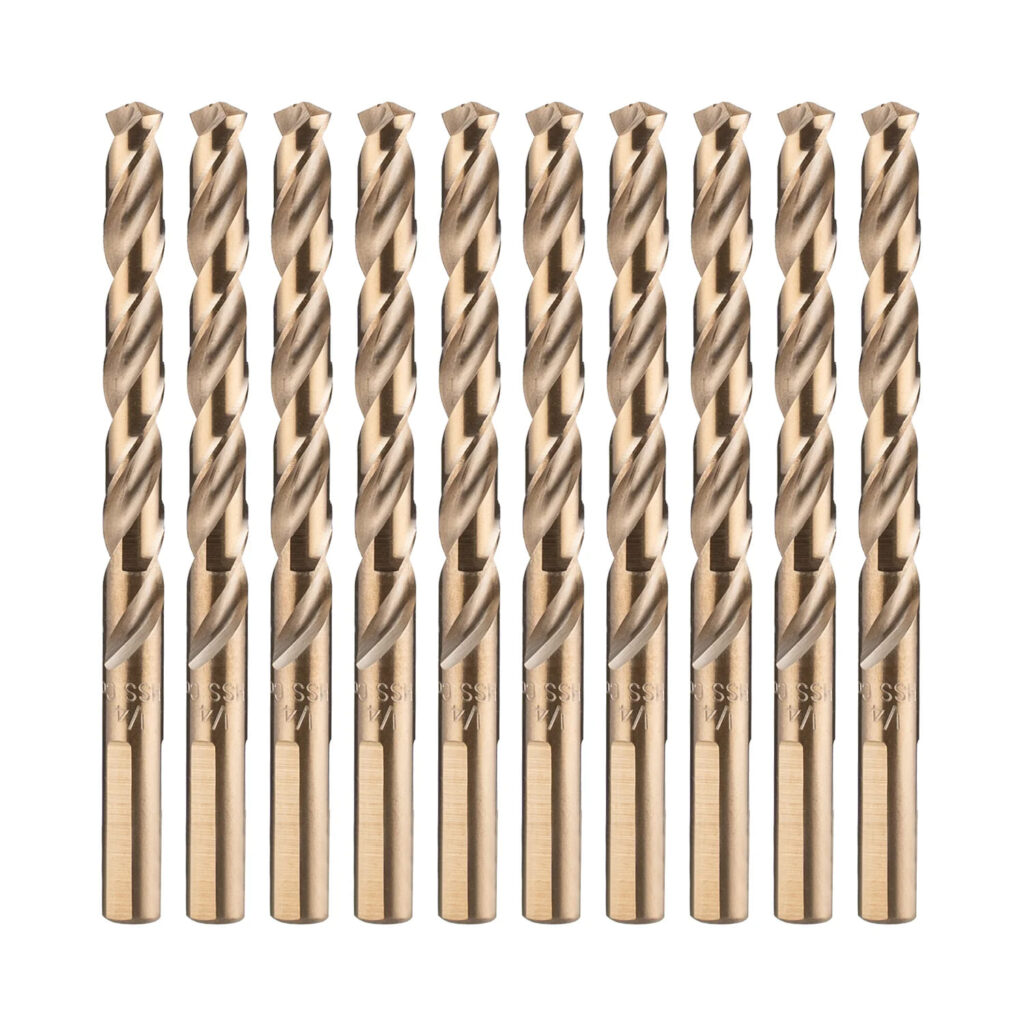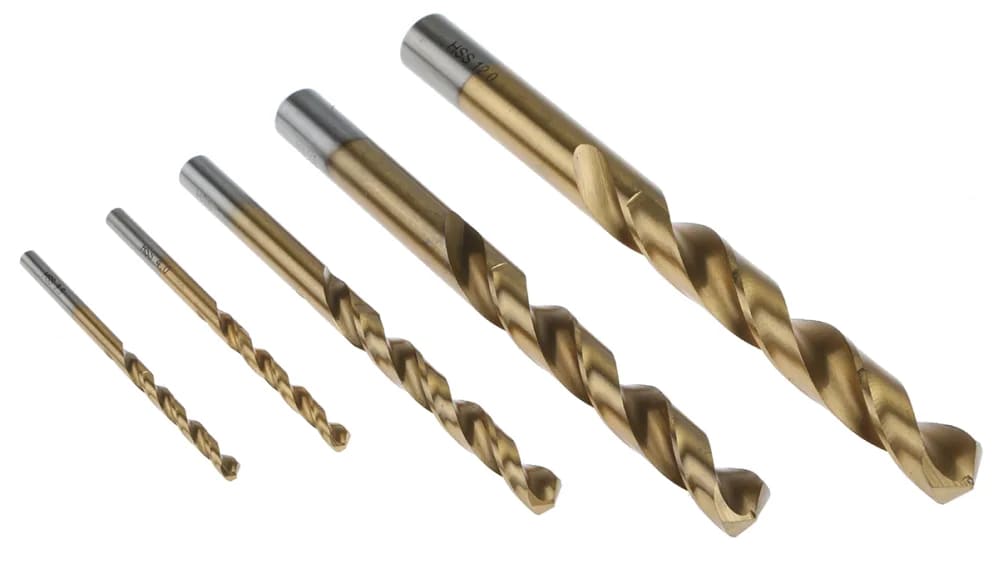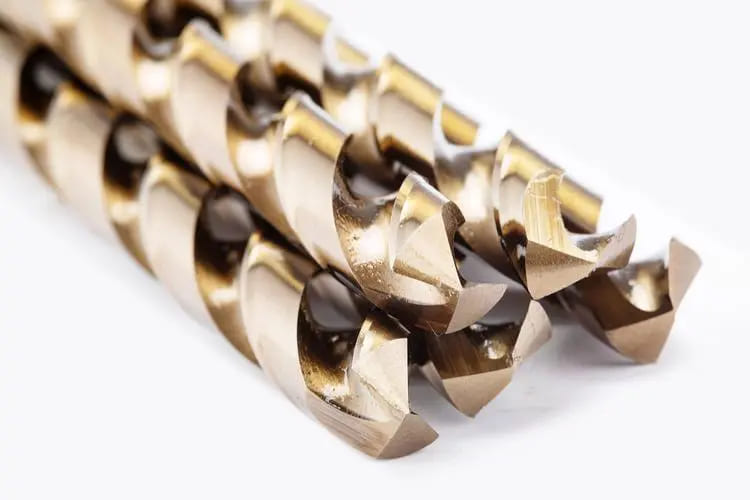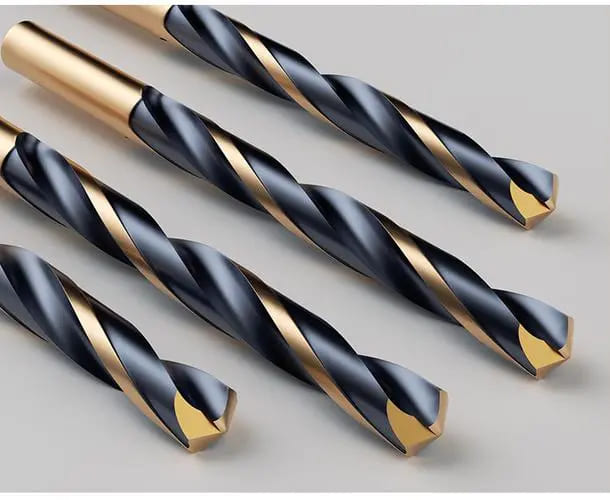A Comprehensive Guide to Twist Drill Bits
With its unique functions and wide applicability, twist drill bits have become an indispensable and important tool in modern industrial manufacturing and play a key role. Understanding the material composition, application range, advantages and disadvantages of twist drill bits is crucial for the correct selection and efficient use of this tool. This article will explore various aspects of twist drill bits in depth to help you better understand.
1.Basic introduction of twist drill bit
A twist drill bit is a cutting tool used to drill holes in a variety of materials, including wood, metal, and plastic. It consists of a cylindrical shank, a spiral groove that runs the length of the drill bit, and a pointed tip with two cutting edges. As the drill bit rotates, the spiral grooves effectively discharge the material being drilled, while the cutting edges precisely cut into the material. The angle and shape of the cutting edges vary depending on the type of material being drilled and the size of the hole required.
Twist drill bits come in a wide range of sizes, from tiny sizes of less than 1 mm in diameter to larger sizes of several centimeters in diameter, to meet a variety of different drilling needs. It can be used with a handheld drill for convenient and flexible operation, or mounted on a drill press for more precise drilling results.

2.Types of materials for twist drill bits
1)High-speed steel (HSS)
High-speed steel is the most common material for manufacturing twist drill bits. HSS drill bits are made of a combination of steel, tungsten and other metals, and have excellent durability and can withstand high temperatures. They perform stably in drilling operations on a variety of materials.
2)Cobalt steel
Cobalt steel drill bits are similar to high-speed steel drill bits, but have a higher cobalt content. This makes cobalt steel twist drill bits more heat-resistant and durable, especially suitable for drilling operations in high-temperature environments.
3)Carbide
Carbide twist drill bits are made of a combination of tungsten carbide and cobalt, and have extremely high hardness. They can easily drill through hard materials such as stainless steel and cast iron, making them an ideal choice for machining hard materials.
4)Diamond
Diamond twist drill bits are mainly used to drill through extremely hard materials such as glass, ceramics, and stone. Diamond particles are embedded in the metal matrix, making them not only durable but also able to withstand high temperatures.
5)Titanium coating
Titanium-coated twist drill bits are made of high-speed steel or cobalt steel, and are covered with a thin layer of titanium nitride coating on the surface. This coating greatly increases the wear resistance of the drill bit while helping to reduce friction when drilling.

3.Advantages of twist drill bits
1)Versatility
It can be used to drill holes on a variety of different materials such as wood, metal, plastic, etc., and has a wide range of applications.
2)Easy to operate
It is very simple to use and can be operated with a handheld drill or installed on a drill press, providing users with a convenient operation method.
3)Wide availability
It is widely available in hardware stores, home improvement stores and online retailers, making it convenient for users to purchase.
4)Economical, efficient and affordable
The price is relatively cheap, which is an economical choice for DIY enthusiasts and professionals.
5)Rich and diverse sizes
With a variety of different sizes, users can easily find the drill bit size that suits their work needs.
4.Disadvantages of twist drill bits
1)Limited drilling shape
Only round holes can be drilled, which may not meet the needs in some specific application scenarios.
2)Easy to cause material breakage
When drilling certain materials, such as ceramics or glass, improper use may cause the material to break or crack.
3)Easy to blunt quickly
When used for hard materials or improperly used, twist drill bits will quickly become blunt, affecting the quality of the hole and may damage the drill bit.
4)Frequent sharpening and maintenance are required
As the use time increases, the twist drill bit may need to be sharpened frequently to maintain its good drilling performance.
5)High heat may be generated
When drilling certain materials, such as metal, the twist drill bit will generate heat, which may cause the material to bend or the drill bit to be damaged.

5.Uses of twist drill bits
1)Woodworking
Twist drill bits are commonly used to drill holes in wood and play an important role in furniture making, woodworking and DIY projects.
2)Metal drilling
Suitable for drilling holes in various metal materials such as steel, aluminum, copper, etc., and is a powerful tool in themetalworking process.
3)Plastic drilling
Can also be used to drill holes in plastic materials such as acrylic, polyvinyl chloride, polycarbonate, etc.
4)Home installation
Can be used to drill holes in the wall for installing shelves, curtains and other household items.
5)Concrete drilling
Used with a hammer drill, it can drill holes in concrete or masonry to install anchors or bolts.
6)Wood carving crafts
Woodcarvers often use twist drill bits to make decorative holes or create textures in wood carvings.
7)Metalworking
Used for drilling holes for bolts, screws and other fasteners.
8)Jewelry making
In jewelry making, it is used to drill holes in beads, stones and other materials.
9)Model making
In model making, it can be used to drill holes in various materials such as plastic, wood or metal.
Summary
Twist drill bits are a type of cutting tool with multiple material options, a wide range of uses, and unique advantages and disadvantages. In practical applications, users need to select the appropriate twist drill bit based on specific drilling needs.
